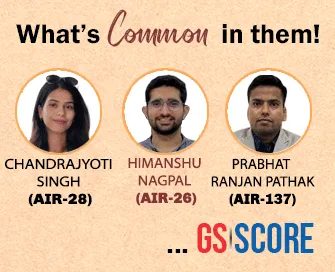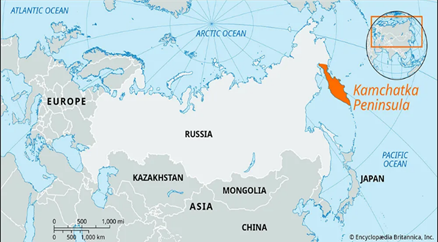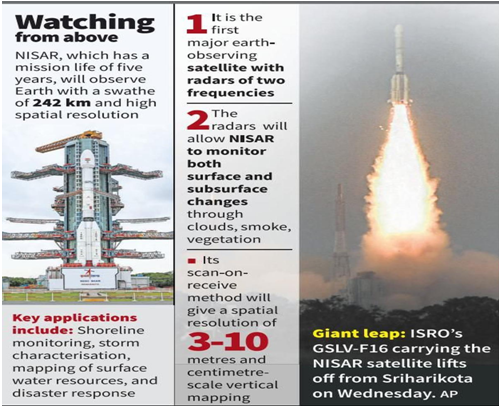

31st July 2025 (13 Topics)
Mains Issues
Context:
Despite a constitutional and statutory mandate, India’s legal aid infrastructure continues to face significant implementation deficits in reach, resources, and responsiveness.
Legal Services Authorities Act, 1987 and the State of Free Legal Aid in India
- Background and Constitutional Mandate
- Article 39A of the Indian Constitution (Directive Principles of State Policy) mandates free legal aid to ensure that opportunities for securing justice are not denied to any citizen due to economic or other disabilities.
- The Legal Services Authorities Act, 1987institutionalised this obligation by creating a three-tier system — National Legal Services Authority (NALSA), State Legal Services Authorities (SLSAs), and District Legal Services Authorities (DLSAs).
- Current Status of Legal Aid Reach and Utilisation
- In FY 2023–24, only 5 lakh people received legal aid — far below the potential beneficiary pool of ~80% of India’s population.
- This was only a 28% increase over the previous year (12.14 lakh), indicating marginal improvement.
- As per the India Justice Report 2025, there is one legal aid clinic per 163 villages, limiting accessibility in rural and remote areas.
- Budgetary Allocation and Utilisation
- Legal aid receives less than 1% of the total justice expenditure (comprising police, judiciary, prisons, legal aid).
- NALSA’s budget decreased from ?207 crore (2017–18) to ?169 crore (2022–23), with utilisation dropping from 75% to 59%.
- Meanwhile, State allocations improved — increasing from ?394 crore (2017–18) to ?866 crore (2022–23).
- Despite higher State allocations, restrictions on NALSA funds (e.g., hiring staff, vehicles, or honorarium payments) limit flexibility and impact service quality.
- Human Resources and Para-Legal Volunteers
- Para-legal volunteers (PLVs) act as critical ground-level intermediaries, but their number fell by 38% between 2019 and 2024.
- As of 2023, there were only 3.1 PLVs per lakh population, with West Bengal and Uttar Pradesh having just 1 PLV/lakh.
- Daily honorariums are inadequate: Only Kerala pays ?750/day; 22 States pay ?500, and 3 pay as low as ?250/day (below minimum wage levels).
- Training-to-deployment mismatch: In 2023–24, of 53,000 PLVs trained, only 14,000 were deployed.
- Legal Aid Defence Counsel (LADC) Scheme
- Launched in 2022, the LADC scheme is a Central Sector Scheme modelled on the public defender system, focused exclusively on defending accused persons.
- It operates in 610 of 670 districts; ?200 crore was fully utilised in FY 2023–24. However, allocation fell to ?147.9 crore in FY 2024–25.
- The scheme reduces the burden on empanelled lawyers and seeks to ensure specialised, quality defence representation.
- It is still at a nascent stage, and long-term success will depend on structural support and funding stability.
- Structural and Systemic Concerns
- Inconsistent quality of service, absence of accountability, and low public trust in free legal aid services remain systemic problems.
- Stringent financial norms hinder flexibility and innovation.
- No uniform revision of honorariums, low per capita spending, and a shrinking cadre of PLVs and empanelled lawyers hamper outreach and effectiveness.
Way Forward
- Fiscal Strengthening and Flexibility
- Increase legal aid allocations to at least 2–3% of the total justice expenditure, considering its constitutional significance.
- Grant greater autonomy to SLSAs and DLSAs in utilising funds, especially for hiring staff and local outreach.
- Strengthening Human Capital
- Standardise and raise PLV honorariums above statutory minimum wages to ensure motivated deployment.
- Institutionaliseregular training, monitoring, and performance-based incentives for PLVs and empanelled lawyers.
- Infrastructure and Accessibility
- Increase the density of legal aid clinics, particularly in rural, tribal, and underserved areas.
- Promote mobile legal aid units, especially in difficult terrain regions like the Northeast, hill states, and forested zones.
- Quality and Accountability Mechanisms
- Introduce digital dashboards for real-time data on legal aid delivery, grievance redressal, and service quality audits.
- Set up independent oversight bodies at the State level to ensure transparency and service improvement.
- Strengthen the LADC Scheme
- Ensure consistent year-on-year funding and integration with existing public defence mechanisms.
- Use tech-enabled tools to streamline case management and coordination between LADCs and the judiciary.


Mains Issues
Context:
Recent developments such as China’s restrictions on rare earth exports and the withdrawal of Western chipmakers from China have reignited debates on India’s economic direction and overdependence on trade-led growth.
India’s Development Trajectory Must Diversify Beyond Trade-Led Growth
- The Current Economic Strategy and Its Vulnerabilities
- Overdependence on Trade: India’s current growth model largely relies on exports, especially in services. However, global trade is witnessing a deceleration post-2010s due to rising protectionism, technological fragmentation, and strategic decoupling.
- Geopolitical Risks: Global tensions, e.g., US-China rivalry, expose the fragility of a trade-centric development model. India’s integration into global value chains (GVCs) may remain constrained due to geopolitics and structural limitations.
- Structural Challenges in India’s Growth Model
- Lack of Industrial Deepening: Unlike China and East Asian economies, India has struggled to build a strong industrial base or create large-scale employment via manufacturing.
- Uneven Growth Distribution: Post-1991 liberalization yielded pockets of prosperity, but core issues like informal employment, underemployment, and agrarian distress remain persistent.
- Institutional and Governance Gaps: India continues to face inefficiencies in governance, public service delivery, and state capacity, which hampers equitable and sustainable growth.
- Socioeconomic Impacts of a Limited Growth Model
- Widening Inequality: Trade and capital-intensive growth have failed to generate mass employment, leading to wealth concentration and rising rural-urban divides.
- Stalled Social Mobility: Education, healthcare, and skill development are not keeping pace with population needs, limiting upward mobility for large sections of the population.
- Reorienting India’s Development Path
- Focus on Human Capital: Investment in public health, education, and nutrition is critical to build a healthy, productive workforce capable of supporting long-term growth.
- Enhance State Capacity: Greater institutional efficiency, decentralization, and fiscal empowerment of state governments are necessary to implement grassroots-level reforms.
- Strategic Industrial Policy: India must promote industrial deepening through targeted support to MSMEs, green energy sectors, and domestic R&D innovation.
- Urbanization as a Growth Lever: Sustainable and well-planned urbanization can become a driver of job creation and economic clustering, as seen in global examples.
Way Forward:
- Revamp Skill Development Programs to align with future employment demands (green jobs, digital economy).
- Accelerate Public Health & Education Spending to enhance workforce productivity.
- Boost Agricultural Reforms focusing on value addition, farmer collectivization, and agro-processing.
- Create Urban Growth Clusters through tier-2 city infrastructure investment.
- Strengthen Cooperative Federalism to empower state-led innovation in policy implementation.
- Invest in Technological Sovereignty—especially in semiconductors, rare earths, and AI—to reduce import dependency.


Mains Issues
India has witnessed notable mangrove restoration efforts across Tamil Nadu, Gujarat, and Maharashtra, aimed at enhancing coastal resilience and biodiversity amid rising climate and urban threats.
Mangroves and Coastal Ecosystem Conservation
- Importance of Mangroves
- Ecological Significance:
- Mangroves are intertidal forests found in tropical and subtropical tidal areas.
- They serve as natural buffers against cyclones, tsunamis, and tidal surges.
- Act as breeding and nursery habitats for fish, crustaceans, and birds.
- Trap and store significant amounts of blue carbon in biomass and soil.
- Climate Resilience Role:
- During the 2004 Indian Ocean tsunami and cyclonic events in the Bay of Bengal, mangroves significantly mitigated damage and saved lives.
- Reduce coastal erosion and salinisation of coastal agricultural lands.
- Livelihood and Cultural Relevance:
- Integral to the sustenance of traditional fisherfolk and honey gatherers.
- Support ecotourism and small-scale fisheries in coastal belts.
- India’s Mangrove Coverage and Threats
- Current Extent:
- India has over 4,900 sq. km of mangroves, majorly found in West Bengal (Sundarbans), Gujarat, Odisha, Tamil Nadu, and Maharashtra.
- Threats to Survival:
- Urban encroachments, industrialisation, shrimp farming, plastic pollution.
- Disruption of tidal flows and hydrology.
- Rising sea levels and altered salinity due to climate change.
- Restoration Efforts Across States
- Tamil Nadu Initiatives:
- Green Tamil Nadu Mission and other coastal schemes have nearly doubled mangrove cover from 4,500 to over 9,000 hectares between 2021–2024.
- Restoration in Muthupettai Estuary and Kazhipattur region focused on community engagement, canal dredging, and removal of invasive species.
- Use of native species like Avicennia marina and Rhizophora.
- Maharashtra (Mumbai) Project:
- Partnership of Amazon’s Right Now Climate Fund, Hasten Regeneration, and BMC to revive mangroves at Thane Creek.
- Introduction of trash booms to prevent plastic inflow.
- Plan to plant 3.75 lakh saplings and support women through employment.
- Gujarat's Lead Role:
- Under MISHTI (Mangrove Initiative for Shoreline Habitats & Tangible Incomes), Gujarat has planted over 19,000 hectares in two years.
- Surpassed Central targets using scientific coastal mapping.
- Accounts for 23.6% of India’s mangrove cover.
- Government Schemes and Policy Support
- MISHTI Scheme (Launched in 2023):
- Implemented under CAMPA funds and MGNREGA.
- Focuses on mangrove afforestation and restoration to strengthen coastal resilience.
- Green India Mission:
- Promotes forest and biodiversity conservation with a focus on carbon sequestration and climate adaptation.
- State Forest Departments and NGOs:
- Increasing collaborations with local communities and scientific institutions.
- Way Forward
- Mainstream Mangroves in Climate Policy: Integrate mangrove conservation in State Action Plans on Climate Change (SAPCCs).
- Community Involvement and Ecotourism: Enhance local stewardship by incentivising traditional communities for conservation.
- Tide-Responsive Infrastructure: Ensure restoration projects account for local hydrology, species diversity, and tidal regimes.
- Pollution Control and Urban Planning: Enforce urban waste segregation, remove plastic inflows, and restrict illegal encroachments.
- Monitoring and Data Systems: Use remote sensing and GIS for long-term monitoring, performance evaluation, and planning.


Prelims Articles
Context:
The sacred Piprahwa relics of Lord Buddha, once scheduled for auction in Hong Kong, have been successfully repatriated to India through a strategic public-private partnership.
Discovery and Provenance:
- The Piprahwa relics were discovered in 1898 by William Claxton Peppé, a British civil engineer, in Piprahwa, Siddharthnagar district, Uttar Pradesh.
- These relics are associated with the mortal remains of Lord Buddha and are considered among the earliest archaeological links to Buddhism in India.
- The relics are believed to date back to the 3rd century BCE and were likely enshrined by Shakyas, the clan to which Gautama Buddha belonged.
Significance of Repatriation:
- This act of cultural repatriation reflects India’s assertive stance on reclaiming spiritual and historical artefacts as part of its global heritage mission.
Broader Cultural Diplomacy:
- The initiative is aligned with India’s increasing use of soft power and cultural diplomacy, particularly in its outreach to Buddhist-majority countries in South and Southeast Asia.
- It enhances India’s image as the custodian of global Buddhist heritage and strengthens its civilisational leadership narrative.


Prelims Articles
Context:
A powerful 8.8 magnitude earthquake struck Russia’s Kamchatka Peninsula, triggering tsunami waves across the Pacific region.
Kamchatka Peninsula
Location & Geography
- Located in Far Eastern Russia, between the Sea of Okhotsk (west) and the Pacific Ocean/Bering Sea (east).

- Forms part of Kamchatka Krai administrative region.
- Lies on the Pacific Ring of Fire – a tectonically active zone.
- Dimensions: ~1,200 km (N-S length), ~480 km (width).
- Area: ~370,000 sq. km (about the size of New Zealand).
Volcanic and Seismic Activity
- One of the world’s densest geothermal hotspots.
- Hosts >150 volcanoes, of which 29 are active.
- Example: KlyuchevskayaSopka – highest volcano (4,750 m), and most active.
- Frequently experiences earthquakes and volcanic eruptions due to subduction of the Pacific Plate beneath the Eurasian Plate.
Climate
- Harsh and subarctic.
- Winters: Long, cold, and snowy.
- Summers: Wet and cool.
- Permafrost and frequent blizzards are common


Prelims Articles
Context:
The Supreme Court has upheld the Chief Justice of India’s (CJI) authority under the Judges (Protection) Act, 1985 to initiate an in-house inquiry into allegations of judicial misconduct.
Legal Basis:
- The Supreme Court invoked the Judges (Protection) Act, 1985, asserting that it empowers the top court to preserve “institutional integrity” by initiating an in-house inquiry in cases of judicial impropriety.
- The in-house procedure is not statutory but is recognized as a constitutionally permissible mechanism for judicial accountability.
Supreme Court’s Position:
- The bench clarified that the CJI’s administrative authority permits initiating a non-statutory in-house inquiry without violating judicial independence.
- The inquiry is intended for fact-finding and does not result in automatic removal; removal can only be initiated through impeachment under Article 124(4) or 217 read with Article 124.
Constitutional and Institutional Relevance:
- The case reaffirms the delicate balance between judicial independence and accountability.
- Reinforces that internal mechanisms for oversight are consistent with constitutional principles, provided they do not lead directly to punitive outcomes.
|
Judges (Protection) Act, 1985:
Judges (Inquiry) Act, 1968:
|


Prelims Articles
Context:
The Sanchar Mitra Scheme has been launched nationwide to involve technical students in promoting telecom awareness and digital safety across India.
Sanchar Mitra Scheme:
Scheme Overview:
- Implementing Body: The Sanchar Mitra Scheme is implemented by the Department of Telecommunications (DoT), Ministry of Communications.
- Target Group: The scheme is targeted at students from technical institutes with active programmes in telecom, electronics, computers, cybersecurity, etc.
- Mode of Implementation: DoT’s field offices—License Service Areas (LSAs)—coordinate directly with institutes to nominate students as ‘Sanchar Mitras’.
Objectives and Activities:
- Awareness Generation: Sanchar Mitras are tasked with conducting community outreach activities to spread awareness on telecom frauds, mobile safety, and responsible telecom usage.
- Capacity Building: Participants are provided training on cybersecurity, telecom regulations, emerging telecom technologies, and policy frameworks.
- Experiential Learning: Selected students may participate in R&D projects, ITU standardization work, and industry conferences, aligning with India’s vision of becoming a telecom innovation hub.
Strategic Relevance:
- Digital Empowerment: The initiative is aligned with national goals of digital inclusion and safe telecom practices.
- Skilling Youth: It supports capacity-building in future telecom professionals and promotes research and innovation culture in the sector.
- Security and Governance: The scheme indirectly contributes to securing India's digital infrastructure by building a digitally literate and security-conscious population.


Prelims Articles
Context:
Select provisions of the Banking Laws (Amendment) Act, 2025 come into effect from 1st August 2025 to reform governance norms and enhance depositor safeguards in banks.
Legislative Scope and Amendments:
- The Act amends five key legislations: RBI Act, 1934; Banking Regulation Act, 1949; SBI Act, 1955; and Banking Companies (Acquisition and Transfer of Undertakings) Acts, 1970 and 1980.
- A total of 19 amendments are incorporated, aiming to modernize the regulatory framework.
- Sections 3, 4, 5, 15–20 of the Act are notified to be effective from 1st August 2025 via Gazette Notification S.O. 3494(E).
Key Governance and Financial Reforms:
- The threshold of ‘substantial interest’ is revised upward from ?5 lakh (unchanged since 1968) to ?2 crore to reflect inflationary adjustments.
- Statutory auditors’ remuneration in PSBs is now institutionally permitted, enabling recruitment of high-quality audit professionals.
- PSBs are empowered to transfer unclaimed shares, interest, and bond redemption amounts to the Investor Education and Protection Fund (IEPF), aligning with the Companies Act.


Prelims Articles
Context:
The United States has announced a 25% tariff on select Indian exports amid stalled trade negotiations, with significant implications for India’s export-driven sectors.
Key Sectors Affected:
- The tariff primarily targets labour-intensive sectors such as marine products (especially shrimps), textiles, pharmaceuticals, automobiles, iron & steel, and leather goods.
- The pharmaceutical sector may face incremental downside risk as the US accounts for over 30% of India’s pharma exports, particularly in generics.
Strategic Trade Concerns:
- Competing Asian economies (e.g., Vietnam at 20%, Indonesia at 19%, Japan at 15%) have secured preferential tariff access, thereby eroding India’s relative competitiveness in the US market.
- The tariff differential especially disadvantages India in labour-intensive and electronic goods sectors where ASEAN peers hold a cost advantage.
Long-Term Outlook:
- Experts caution against a rushed trade agreement, especially if it entails politically sensitive concessions in agriculture and dairy
- A well-calibrated deal, like the India-UK FTA template, could unlock preferential access without compromising domestic livelihood safeguards.
- Despite short-term headwinds, India's service exports, which reached $387.5 billion in FY25, are expected to cushion the overall impact.


Prelims Articles
Context:
India successfully launched the NASA-ISRO Synthetic Aperture Radar (NISAR) satellite aboard GSLV-F16 from Sriharikota.
NISAR (NASA-ISRO Synthetic Aperture Radar)
- Purpose: Earth observation with high-resolution, all-weather, day-and-night imaging capability.

- Orbit: Sun-synchronous polar orbit at 747 km altitude; completes revisit every 12 days.
Key Technological Features:
- First Earth observation satellite with dual-frequency SAR:
- L-band SAR (by NASA).
- S-band SAR (by ISRO).
- Mounted on a single integrated platform.
- Uses ISRO’s I-3K satellite bus and is launched on GSLV-F16 with indigenous cryogenic upper stage.
- Total launch mass: 2,393 kg.
Launch Significance:
- First successful placement of a satellite in Sun-synchronous orbit by GSLV.
- 18th GSLV mission, 12th with indigenous cryogenic stage.
- Reflects ISRO’s technological advancement in high-mass satellite launch capability.
Applications and Impact:
- Climate change monitoring, glacier dynamics, forest biomass estimation, and agricultural productivity.
- Earthquake and volcano activity detection, coastal zone management, aviation safety, and infrastructure planning.
- Enhances disaster preparedness and resilience through timely geospatial data.


Editorials
Context:
The custodial death of Ajith Kumar in Tamil Nadu in June 2025 has sparked renewed calls for police accountability and anti-torture legislation in India.
Systemic Nature of Custodial Violence
- Prevalence and Pattern:According to a 2023 Lok Sabha reply, 687 custodial deaths occurred between 2018–19 and 2022–23, with states like Gujarat, Maharashtra, and Tamil Nadu topping the list. Many deaths are misreported as suicides or accidents, masking the scale of abuse.
- Marginalised Groups as Victims:Custodial torture disproportionately targets daily-wage workers, Dalits, Adivasis, and migrants, reflecting entrenched hierarchies of caste and class. Torture thus becomes not just a policing issue, but a manifestation of structural injustice.
- Failures in Oversight and Training:With 90% of the police force comprising constables lacking adequate training, coupled with institutional apathy and pressure for swift results, disciplinary action remains minimal and convictions almost nonexistent.
Legal and Institutional Deficit
- Judicial Safeguards Exist but Are Ineffective:The Supreme Court in K. Basu v. State of West Bengal (1996) laid down procedural safeguards, and in K.S. Puttaswamy (2017) upheld the right to bodily autonomy. Yet, compliance remains weak.
- Legislative Inaction Despite Recommendations:The Law Commission’s 273rd Report (2017) recommended a standalone anti-torture law. However, no such legislation has been enacted, and India has not ratified the United Nations Convention Against Torture (UNCAT).
- Global Perception and Indices:In 2025, India was ranked as a “high-risk” country in the Global Torture Index, indicating international concern over persistent custodial abuse and state inaction on accountability.
Scientific, Comparative, and Policy Perspectives
- Scientific Evidence Against Torture:Neuroscientist Shane O'Mara’s research shows that torture impairs brain functions critical for memory and truth-telling, leading to unreliable or false confessions that undermine justice.
- Global Best Practices in Interrogation:The UK’s PEACE model and the U.S. High-Value Detainee Interrogation Group (HIG) have demonstrated that non-coercive, rapport-based techniques are more effective, ethical, and accurate in intelligence gathering.
- Democratic Imperative for Reform:A mature democracy must ensure that policing upholds constitutional values. The use of Sherlock Holmes–like evidence-based methods must replace Dirty Harry–style brutality rooted in impunity and secrecy.
Practice Question:
Custodial violence continues to undermine constitutional values despite judicial safeguards and international commitments. Critically examine the structural, legal, and societal challenges in addressing torture in India. Suggest institutional reforms with examples from global best practices.(250 words)


Editorials
Context:
A short viral video capturing a personal moment in a public setting led to widespread speculation, moral judgement, and professional fallout — reigniting debate over digital ethics and media accountability.
The Age of Virality and Moral Spectacle
- From Incident to Narrative: Everyday interactions, when captured without context and shared online, are often turned into moral fables. The digital public tends to assign roles — “victim”, “villain”, or “hero” — without full knowledge of the situation.
- Algorithmic Amplification of Emotion: Social media platforms prioritise engagement, often pushing forward emotionally charged content. The design itself rewards outrage, mockery, or titillation, not truth or empathy.
- Precedents and Patterns: Multiple cases in India have shown how certain demographics — especially women and minorities — are disproportionately targeted and subjected to digital mob justice through such viral episodes.
Erosion of Privacy and Absence of Safeguards
- Violation of Contextual Boundaries: Privacy today is not merely about secrecy but about control over the context in which information is shared. Once videos are detached from their setting and go viral, this control is lost.
- Digital Vigilantism: Online actors often play the role of judge and jury, fuelling informal punishments such as doxxing, job loss, or public shaming — all outside the ambit of law or ethics.
- Media’s Race to Sensationalism: Legacy and digital media outlets increasingly pick viral content for news stories without due diligence, blurring lines between journalism and entertainment, and sidelining accountability.
The Need for Digital Citizenship and Platform Reform
- Building a Responsible Digital Culture: Digital literacy must now include ethical responsibilities — empathy, restraint, and awareness of long-term consequences for others, especially when dealing with unverifiable or sensitive content.
- Tech Platforms and Policy Overhaul: Regulation of algorithms that amplify harmful content is essential. Tools for flagging, delaying, or contextualising sensitive posts must be mandated, not optional.
- Reclaiming Journalistic Ethics: Newsrooms need clearer protocols for handling viral content. Verification, proportionality, and sensitivity must guide editorial choices, especially where individuals' reputations are concerned.
Practice Question:
“In an era of rapid digital dissemination, the boundaries between public interest and voyeurism are increasingly blurred.” Discuss this statement in the context of privacy, media responsibility, and the right to dignity. Suggest suitable regulatory and behavioural reforms. (250 words)


Editorials
Context:
The recent parliamentary debate on Operation Sindoor, India’s retaliatory strike post the Pahalgam terror attack, reignited discussions on transparency, accountability, and strategic maturity in national security decision-making.
Strategic Posturing and Democratic Vibrancy
- Tactical Clarity Amid Crisis:Operation Sindoor was a response marked by extraordinary coordination, targeting over 100 terror-linked assets. It reflected India's growing ability to calibrate tactical retaliation with strategic restraint.
- Democratic Oversight as Strength:The post-strike debate in Parliament exemplified democratic resilience, where probing questions about intelligence failure, command chain, and engagement rules were raised openly.
- Rejecting the Culture of Secrecy:Unlike authoritarian models, India’s democracy chose scrutiny over silence. The parliamentary discourse reaffirmed the republic’s right to question statecraft in the public domain.
Political Responses and Leadership Dynamics
- Prime Minister’s Assertive Posture:Despite criticisms of silence, the Prime Minister emphasized “armed forces acted with professionalism and statesmanship,” affirming executive restraint under pressure.
- Opposition’s Democratic Role:The Opposition demanded accountability, transparency, and clarity on command decisions, challenging the government without undermining national security.
- Institutional Resilience Over Populism:By embracing inquiry instead of deflecting it, the Indian political class resisted hyper-nationalist narratives and preserved democratic norms during national security discussions.
Global Context and Future Implications
- Strategic Signaling to Adversaries:India’s measured response communicated that retaliation would be rule-based and deliberate, targeting terror infrastructure while avoiding civilian escalation.
- Redefining National Security Doctrine:The shift away from confessional, secrecy-driven doctrines toward public engagement reflects India’s evolution as a confident strategic actor.
- Democracy in the Age of Disinformation:At a time when social media polarizes and amplifies state narratives, India’s ability to conduct open parliamentary debate sets it apart from authoritarian responses globally.
Practice Question:
In the context of India's response to cross-border terrorism, critically examine the role of parliamentary scrutiny in shaping a democratic national security doctrine. How does this balance strategic secrecy with accountability?(250 words)



